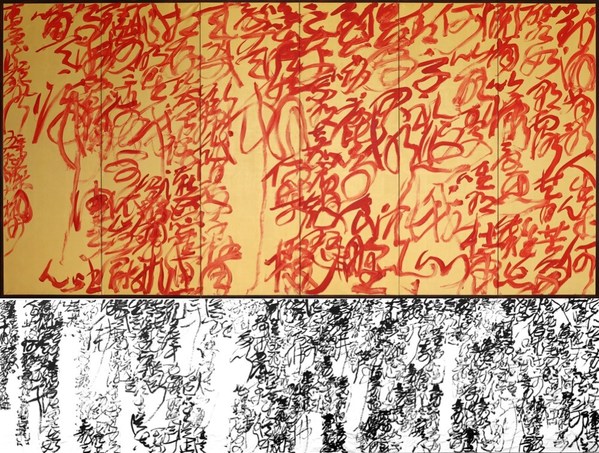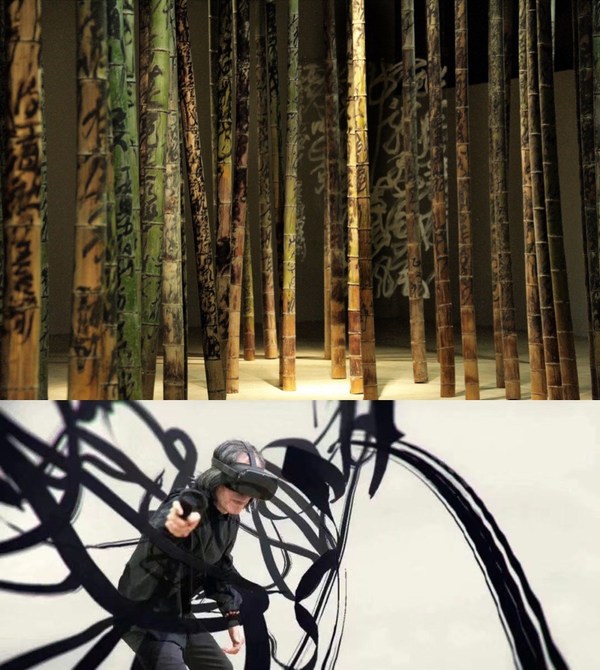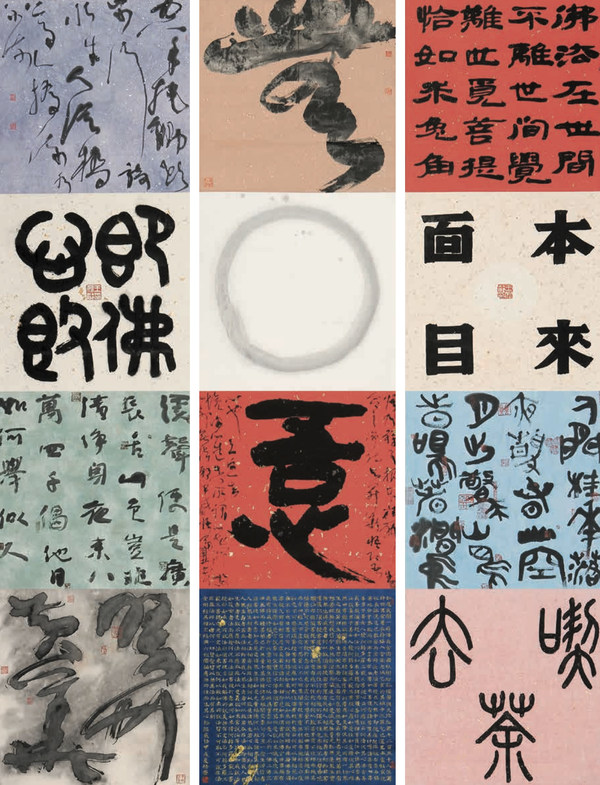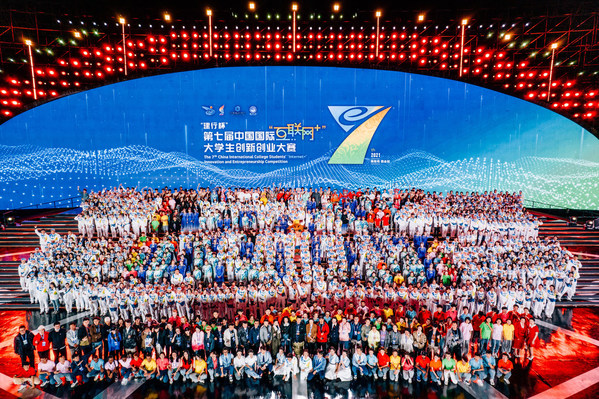Exhibition at Zhejiang Art Museum “From Inception: Wang Dongling 60 Years of Calligraphy”
HANGZHOU, China, Oct. 16, 2021 /PRNewswire/ — The exhibition “From Inception: Wang Dongling 60 Years of Calligraphy” opens at the Zhejiang Art Museum on October 16, 2021. It focuses on China Academy of Art’s professor, Wang Dongling’s 60-year exploration of calligraphy art, from traditional calligraphy to other styles such as Chaos-Writing (Entangled Calligraphy), Big Writing, Silver Gelatin Calligraphy, Calligraphy on Bamboo Stalks, Calligraphy using immersive virtual reality. The long span of time covered by the exhibits, the diversity of styles, the depth of academic research, and the novelty of media experimentation are unprecedented in both Wang Dongling’s exhibition history and in Chinese calligraphy exhibition history.
In Exhibition Hall No. 4, named “Fantasy Land of Calligraphy,” is a world of colored glaze illuminated by lights and colors: from abstract ink paintings to silver gelatin calligraphy, to the use of materials like stainless steel mirror and clear acrylic, and to the numerous representations through new media such as iPad calligraphy and motion capture digital art.
In Exhibition Hall No. 5, named “Scholar’s Snow Cave,” the small-sized works in Regular Script and big-sized works in Cursive Script encompass calligraphy genres including album leaves, scrolls, tablet inscriptions, screens, etc.
The hanging scrolls in four scripts in Exhibition Hall No.6 showcase the six decades’ creative journey of Wang Dongling. The newly created “Big Writing” installation in commemoration of the 2,500th anniversary of Confucius’ passing represents the contours of the journey of Confucius.
He initiated the project “Big Characters Travel the World,” a plan to construct writing scenes of Chinese calligraphy at art institutions worldwide, promoting academic communication between calligraphy and international art circle. In his view, Chinese calligraphers must enter the scenes of international art for mutual illumination and inspiration in cross-cultural exchange. It is only by “manifesting the common through differences” that calligraphy can return to its true origin in cultural dialogues and make due contributions to the culture of humanity as a whole.
His works are represented at the National Art Museum of China, the Palace Museum (Taipei), Peking University, the British Museum, the Victoria and Albert Museum, the Metropolitan Museum of Art, the Art Institute of Chicago, the Vancouver Art Gallery, as well as in universities including Harvard, Yale, Stanford, and Berkeley.
Related Links :
http://www.caa.edu.cn














